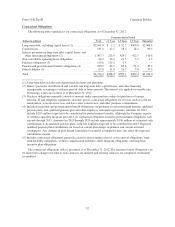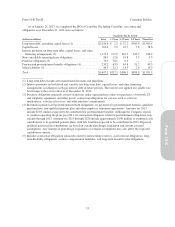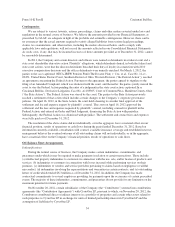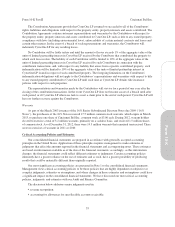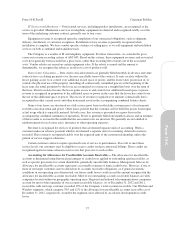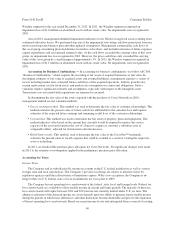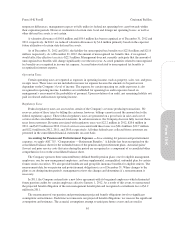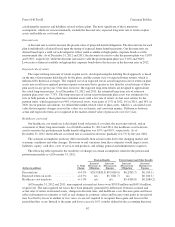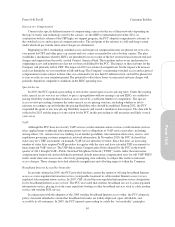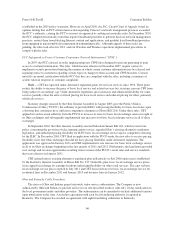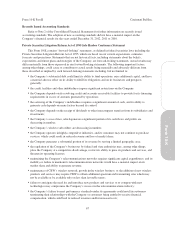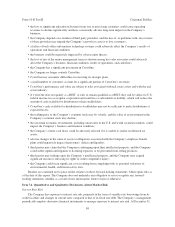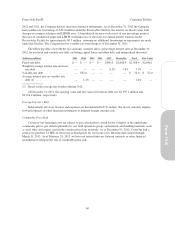Cincinnati Bell 2012 Annual Report Download - page 135
Download and view the complete annual report
Please find page 135 of the 2012 Cincinnati Bell annual report below. You can navigate through the pages in the report by either clicking on the pages listed below, or by using the keyword search tool below to find specific information within the annual report.
Form 10-K Part II Cincinnati Bell Inc.
temporary differences, management expects to fully utilize its federal net operating loss carryforwards within
their expiration periods. However, realization of certain state, local and foreign net operating losses, as well as
other deferred tax assets, is not certain.
A valuation allowance of $56.8 million and $58.4 million has been recognized as of December 31, 2012 and
2011, respectively. In 2012, we reduced valuation allowances by $1.6 million primarily based on the expected
future utilization of certain state deferred tax assets.
As of December 31, 2012 and 2011, the liability for unrecognized tax benefits was $22.8 million and $21.8
million, respectively. As of December 31, 2012, the amount of unrecognized tax benefits that, if recognized,
would affect the effective tax rate is $22.3 million. Management does not currently anticipate that the amount of
unrecognized tax benefits will change significantly over the next year. Accrued penalties related to unrecognized
tax benefits are recognized in income tax expense. Accrued interest related to unrecognized tax benefits is
recognized in interest expense.
Operating Taxes
Certain operating taxes are reported as expenses in operating income, such as property, sales, use, and gross
receipts taxes. These taxes are not included in income tax expense because the amounts to be paid are not
dependent on the Company’s level of income. The expense for certain operating tax audit exposures is also
recognized in operating income. Liabilities are established for operating tax audit exposures based on
management’s assessment of the probability of payment. Upon resolution of an audit, any remaining liability not
paid is released and increases operating income.
Regulatory Taxes
Federal regulatory taxes are assessed on certain of the Company’s revenue producing transactions. We
recover certain of these taxes by billing the customer, however, billings cannot exceed the amount due to the
federal regulatory agency. These federal regulatory taxes are presented on a gross basis in sales and cost of
services in the consolidated financial statements. In certain instances, the Company does not fully recover these
taxes from customers. Revenue associated with regulatory taxes was $22.2 million in 2012, $20.6 million in
2011, and $19.9 million in 2010. Cost of services associated with these taxes was $24.4 million, $22.7 million,
and $22.0 million in 2012, 2011, and 2010, respectively. All other federal taxes collected from customers are
presented in the consolidated financial statements on a net basis.
Accounting for Pension and Postretirement Expenses — In accounting for pension and postretirement
expenses, we apply ASC 715, “Compensation — Retirement Benefits.” A liability has been recognized on the
consolidated balance sheet for the unfunded status of the pension and postretirement plans. Actuarial gains/
(losses) and prior service costs that arise during the period are recognized as a component of accumulated other
comprehensive loss on the consolidated balance sheet.
The Company sponsors three noncontributory defined benefit pension plans: one for eligible management
employees, one for non-management employees, and one supplemental, nonqualified, unfunded plan for certain
former senior executives. We also provide healthcare and group life insurance benefits for eligible retirees. The
measurement date for our pension and postretirement obligations is as of December 31. When changes to the
plans occur during interim periods, management reviews the changes and determines if a remeasurement is
necessary.
In 2011, the Company entered into a new labor agreement with its bargained employees which eliminated
future pension credits for certain employees effective January 1, 2012. As a result of this event, we remeasured
the projected benefit obligation of the non-management benefit plan and recognized a curtailment loss of $4.2
million in 2011.
The measurement of our pension and postretirement projected benefit obligations involves significant
assumptions and estimates. Each time we remeasure our projected benefit obligations, we reassess the significant
assumptions and estimates. The actuarial assumptions attempt to anticipate future events and are used in
61
Form 10-K



